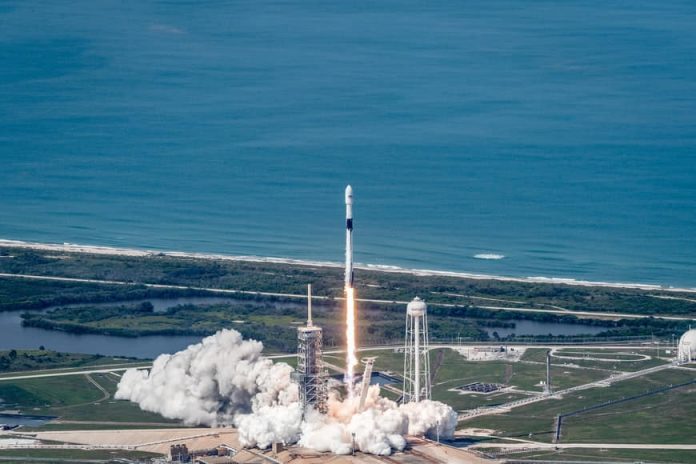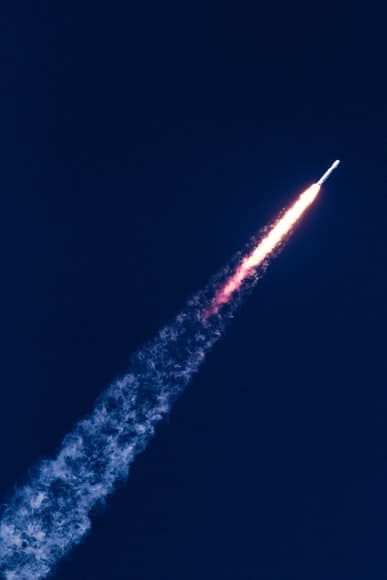What are Sounding Rockets?
Sounding rockets are one or two-stage solid propellant rockets which are primarily intended for space research and also for probing the upper atmospheric regions using rocket-borne instruments. They also serve as easily affordable platforms to prove or for testing prototypes of new components or subsystems intended for use in launch vehicles and satellites.
# Single-stage solid-propellant rockets can lift a 5.4-kilogram (12-pound) meteorological payload to 60 km.
# Two-stage solid-propellant vehicles can lift a 22-kilogram payload to 3,000 km.
The launch of the first sounding rocket USA made ‘Nike Apache’ also known as Argo B-13, was a two-stage sounding rocket was launched from Thumba near Thiruvananthapuram, Kerala on November 21, 1963. This launch marked the beginning of the Indian Space Programme and the experience gained was of immense value in the mastering of solid propellant technology and allied systems of the launch vehicles.
The name Sounding Rocket is derived from the nautical term “to sound,” which means to take the measurements.
Important points:
- Sounding Rockets are also called Probe Rockets.
- Sounding Rockets range in performance and size.
- Sounding Rockets are divided into two parts namely a payload and a solid-fuel rocket motor.
- Sounding rockets are sub-orbital carriers i.e., they do not go into orbit around earth.
- Sounding Rockets have specific regions of intense turbulence below 96km altitude.
- Sounding Rockets made it easy to probe the atmosphere in situ using rocket-borne instrumentation.
- In recent times the vehicles which are used for sounding rocket studies use solid fuel exclusively.
- It is easy to conduct coordinated campaigns by launching the sounding rockets simultaneously from different locations.
- Several sounding rockets can be launched in a single day.
- A sounding rocket generally has a vertical trajectory as it travels through the upper atmosphere carrying a payload of scientific instruments.
- RH-75, with a diameter of 75mm was the first truly Indian-sounding rocket, and this launch was followed by RH-100 and RH-125 rockets respectively.
About Thumba Equatorial Rocket Launching Station (TERLS):
The Thumba Equatorial Rocket Launching Station (TERLS) was established in 1963 at Thumba, a location close to the magnetic equator. Because of the establishment of TERLSS, India has witnessed a quantum jump in the scope for aeronomy and atmospheric sciences.
The launch of the first sounding rocket from Thumba near Thiruvananthapuram, Kerala on 21 November 1963, marked the beginning of the Indian Space Programme. The first sounding rockets were two-stage rockets which were imported from France (Centaure) and Russia (M-100). While the Centaure was capable of reaching 150 km with a payload of approximately 30 kg and the M-100 could carry a payload of 70 kg to an altitude of 85 km.
Role of ISRO in launching Sounding Rockets:
- ISRO started launching indigenously made sounding rockets in 1965.
- From 1967, ISRO started launching a series of their own sounding rockets named Rohini from TERLS.
- By using the Rohini sounding rockets several scientific missions with national and international participation have been conducted in the country.
- In 1970, the Hydro meteorological Services of the USSR had signed an agreement with ISRO to launch their meteorological sounding rockets, M-100, every week, from TERLS. This launching program continued uninterruptedly till 1993.
- In 1975, all the sounding rocket activities were consolidated under the Rohini Sounding Rocket (RSR) Programme.
- The sounding rocket program in India was the bedrock on which the edifice of launch vehicle technology in ISRO was built.
Operational Sounding Rockets
Presently, operational sounding rockets include three versions namely RH-200, RH-300-Mk-II, and RH-560-Mk-III, which cover a payload range of 8-100 Kg and an apogee range of 80-475 km.
| Vehicle | RH-300-Mk-II | RH-560-MK-II | RH-200 |
| Payload ( in kg) | 60 | 100 | 10 |
| Altitude (in km) | 160 | 470 | 80 |
| Purpose | Aeronomy | Aeronomy | Meteorology |
| LaunchPad | SDSC-SHAR | SDSC-SHAR | Thumba Balasore |












Everything is very open with a very clear explanation of the challenges. It was definitely informative. Your website is extremely helpful. Thank you for sharing!
Thank you so much
Nice post i like it 100 %. I learn something new and challenging on sites I stumbleupon on a daily basis. Its always helpful to read through articles from other writers and use something from their web sites.
Thank you so much
Great web site. Lots of useful info here. I am sending it to several friends ans additionally sharing in delicious. And of course, thanks in your effort!
Thank you
Very nice write-up. I absolutely appreciate this site. Stick with it!
Thank you so much
Im still learning from you, as Im making my way to the top as well. I certainly liked reading all that is posted on your blog.Keep the tips coming. I enjoyed it!
Thank you so much
Very interesting information!Perfect just what I was looking for!
Great points altogether, you simply gained a new reader.
Thank you
I am extremely impressed along with your writing talents as well as with the format for your blog. Is that this a paid topic or did you customize it yourself? Either way keep up the excellent quality writing, it is uncommon to peer a great weblog like this one today..
Thank you so much
I was reading through some of your posts on this internet site and I conceive this website is real instructive! Keep on putting up.
Sure
Itís difficult to find educated people about this subject, but you sound like you know what youíre talking about! Thanks
Awesome things here. I’m very glad to see your post. Thanks a lot and I’m looking forward to contact you. Will you kindly drop me a e-mail?
Hello everybody, here every person is sharing their views,
so it’s nice to read this blog, and I pay a quick visit to this website daily.
My web blog … coupon
I do love the way you have presented this particular concern and it really does provide me personally some fodder for thought. Thank you for this excellent point. I respect the perspective.
Thank you